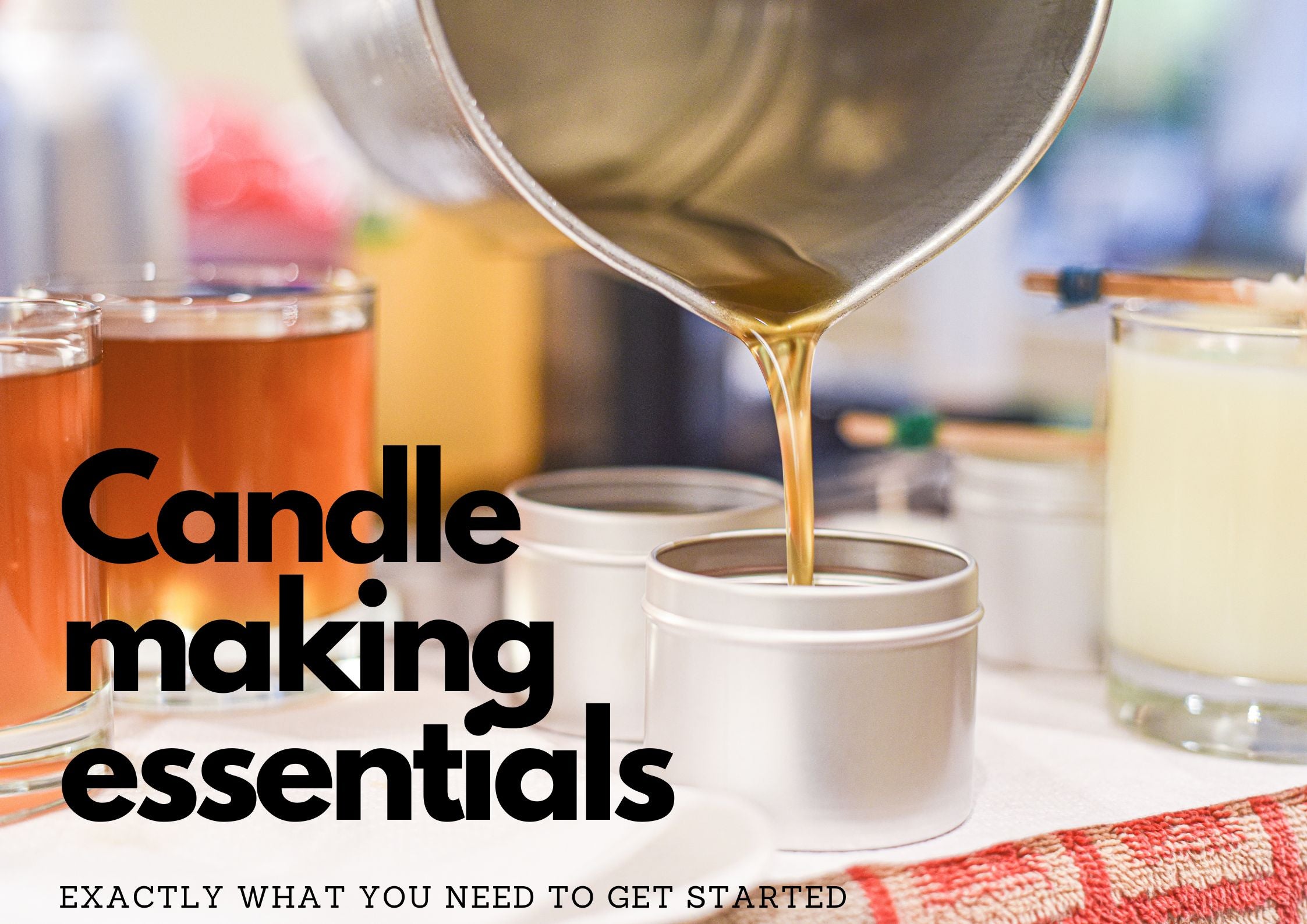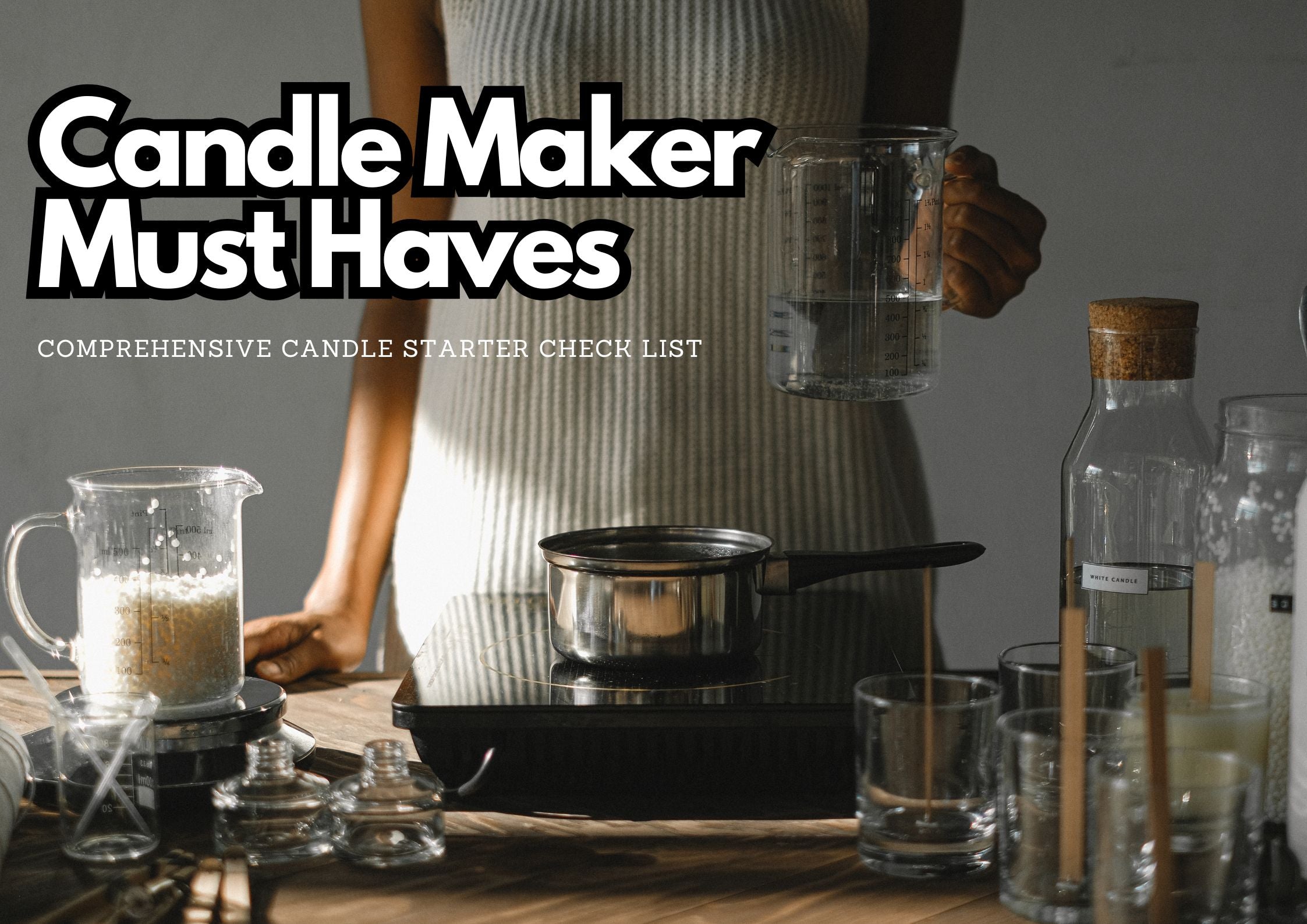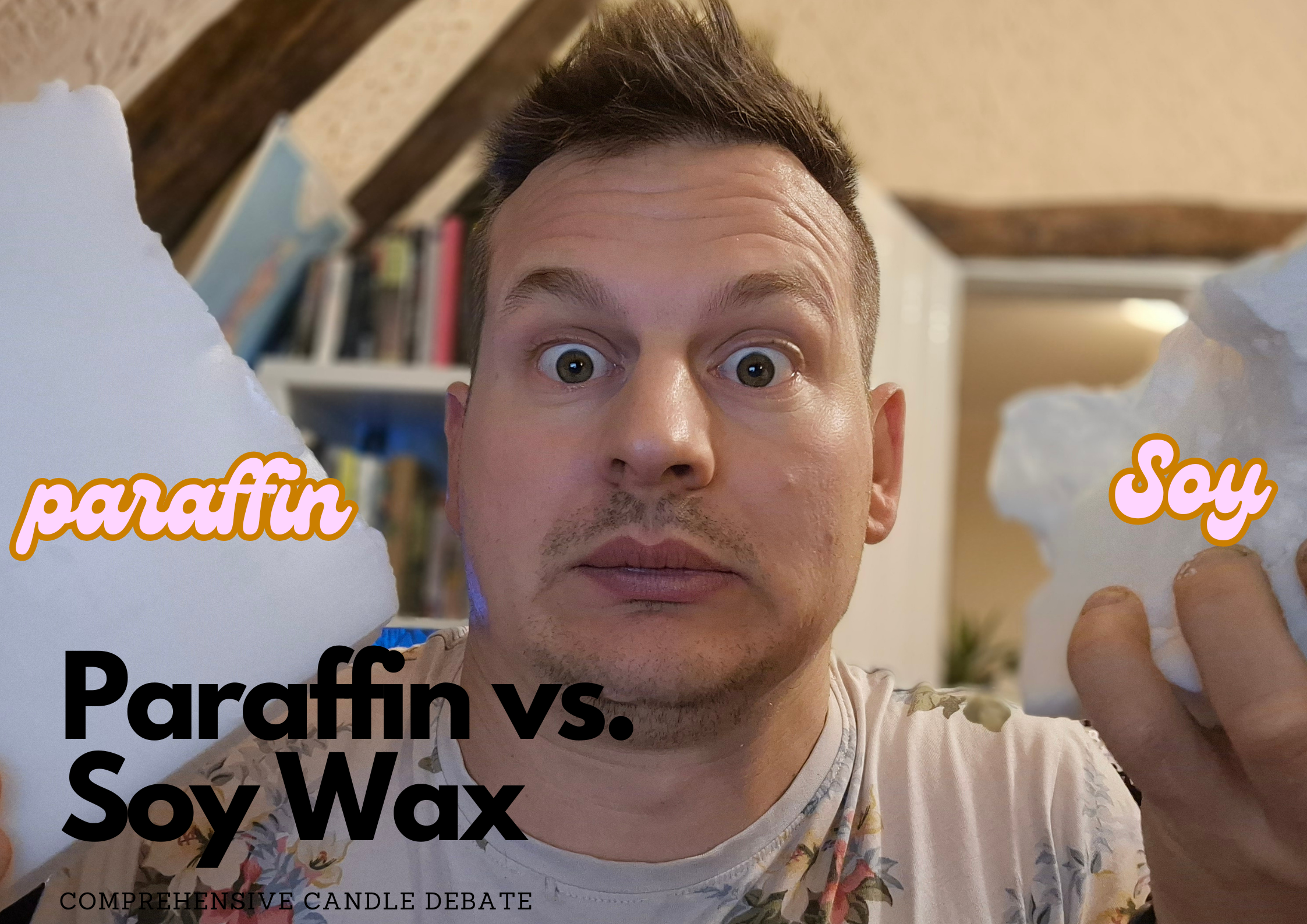The Candle-Making Essentials
Nov 23 , 2024
The Candle-Making Essentials
Before you can create your first candle masterpiece, it’s essential to start with a solid foundation. Candle-making might seem overwhelming with all the different tools, waxes, wicks, and fragrances out there, but don’t worry—this chapter is here to simplify everything for you.
When I first started, I made the classic beginner mistake: I bought every tool and supply I could find, convinced that I needed it all to make great candles. Half of it ended up sitting untouched in my workspace, collecting dust. The truth is, you don’t need fancy gadgets or a massive budget to create amazing candles—you just need the right tools and materials. That’s why, in this chapter, we’ll cut through the clutter and focus on the essentials.
I was on a relentless quest to make the perfect candle. I was convinced that the problem was me—my technique, my lack of mastery. I believed that if I just worked harder, I’d crack the code. But here’s the truth: the perfect candle doesn’t exist. For ages, I was fixated on one wax and one wick, stubbornly trying to make them work together, when in reality, candle making isn’t about perfection—it’s about finding what works best for your unique style and audience.
It wasn’t until I started testing different waxes and wicks that I began to see results, but it took me a long time to figure that out. Every candle is subjective. What smells incredible to you might not be someone else’s favourite. The goal isn’t perfection—it’s creating the best candle you can, one that reflects your craftsmanship and dedication.
So don’t get bogged down by the idea of perfection. Let’s focus on building a strong foundation with the essentials and finding the combinations that work for you. You’ll save time, money, and frustration—and you’ll create candles you can be proud of.
We’ll cover:
- The must-have tools and supplies for candle making (and why they matter).
- How to choose the best wax, wicks, and fragrances for flawless results.
- Tips for avoiding common beginner mistakes when shopping for materials.
By the end of this chapter, you’ll have a clear understanding of what you need to get started and the confidence to make informed choices. Whether you’re working with a tight budget or just want to avoid wasting money, this chapter will set you up for success.
The Only Tools and Supplies You Need
When starting out in candle making, it’s easy to overbuy, thinking you need a mountain of tools and gadgets. The truth is, you only need a few essentials to create professional-quality candles. In this section, we’ll cover the must-have supplies so you can focus on what matters and skip the extras.
This covers all the basic tools and supplies you’ll need as a candle maker, it might be basic for some but I want to make sure I’ve covered everything!
1. Wax Melting Container
- What It Is: A heat-resistant container, such as a metal pouring pitcher, for melting wax.
- Why You Need It: Wax needs to be melted evenly and safely, and this container will allow you to pour it easily into your candle jars or molds without making a mess.
- Beginners: You don’t need a fancy double boiler—an inexpensive pouring pitcher placed in a regular saucepan filled with water works perfectly.
2. Heat Source
- What It Is: A stovetop or hot plate to melt your wax.
- Why You Need It: Wax must be melted to a precise temperature to mix properly with fragrance and pour smoothly.
- Beginners: If you already have a kitchen stovetop or a basic hot plate, you’re good to go—no need to buy a specialty melting system.
2.1 Candle Wax melter (pro tip)
3. Thermometer
- What It Is: A digital or candy thermometer to measure the temperature of your wax.
- Why You Need It: Temperature control is one of the most critical aspects of candle making. A thermometer helps you avoid burning your wax or adding fragrance at the wrong time, which can ruin your candle’s scent throw.
- Pro Tip: A simple, affordable thermometer works fine—you don’t need a high-tech gadget. The one I use is a digital thermometer designed for food, it was about £5 on Amazon.
4. Candle Wax
- What It Is: Wax is the foundation of your candle, and choosing the right one depends on your goals, how you want to market your candles, and your personal preferences. Popular options include soy wax, paraffin wax, and beeswax, but there’s no one-size-fits-all choice. For my own candle business, I use a mineral and vegetable wax blend for some candles and a coconut soy wax for another range. Each type has its pros and cons, so it’s all about finding what works best for your brand and values.
- Why You Need It: Wax is the core of your candle, so choosing the right type will affect how it burns, its scent throw, and its appearance.
- Pro Tip: Start with soy wax—it’s beginner-friendly, eco-friendly, and holds fragrance well. It’s what I did in the beginning to understand basic candle making, it gives you a good foundation in candle making.
5. Wicks
- What It Is: The string that serves as the candle’s fuel delivery system, drawing wax to the flame.
- Why You Need It: Using the wrong size or type of wick can cause uneven burning, weak flames, or excessive tunneling.
- Pro Tip: Pre-tabbed wicks, which come with a metal base, are ideal for beginners. When choosing a wick, start by matching the size to your container’s diameter. Many candle-making websites provide general guidelines for wick selection based on container size. However, keep in mind that these are just estimates—every wax and wick combination behaves differently, so testing is essential.
6. Fragrance Oils
- What It Is: Oils designed specifically for candles to give them their scent.
- Why You Need It: A great-smelling candle depends on high-quality fragrance oils that are safe to burn, not all fragrance oils are made equally and not all fragrance oils work with every wax.
- Pro Tip: Avoid using essential oils, as they often don’t mix well with wax or produce a good hot throw. However I have made lovely candles with essential oils but it does take a bit of practice as some of them do seep from the wax or create other issues.
7. Candle Containers
- What It Is: Jars, tins, or other containers for your candles.
- Why You Need It: You need something to hold your wax and wick while the candle sets.
- Pro Tip: Glass jars with lids are a versatile, beginner-friendly option that not only look professional but also help seal in the fragrance. Starting with affordable glass jars, like those designed for jam making, is a cost-effective way to get started—it’s exactly how I began my own candle-making journey.
8. Stirring Utensil
- What It Is: A heat-resistant spoon or silicone spatula to stir your wax and fragrance.
- Why You Need It: Proper stirring ensures that your wax and fragrance are evenly mixed.
- Pro Tip:I leveled up my candle-making game by investing in a metal whisk designed for commercial kitchens—it helps incorporate the fragrance more effectively into the wax. However, when I was starting out, I used whatever I had on hand, like a kitchen spatula or spoon. The key is to start with what you’ve got rather than waiting for the perfect tools. Progress beats perfection every time!
9. Wick Holders or Centering Tools
- What It Is: Wick centering holders,Clips, chopsticks, or popsicle sticks with holes to keep your wicks centered as the wax hardens.
- Why You Need It: A centered wick is crucial for an even burn and clean flame.
- Pro Tip: You can DIY wick holders using household items like clothespins, pencils, or clips used to seal food bags. When I first started, I used simple pegs and bag clips to keep my wicks centered. Later, I upgraded to custom-made 3D-printed wick holders designed specifically for my candle jars, which made the process even easier and more precise.
10. Scale
- What It Is: A kitchen or postal scale for measuring wax and fragrance oils.
- Why You Need It: Precise measurements are key to ensuring the correct wax-to-fragrance ratio.
- Pro Tip: Look for an affordable digital scale that measures in grams for better accuracy.
Why You Don’t Need Extra Gadgets
It’s easy to feel overwhelmed by social media and get caught up trying to replicate what others are doing. But you don’t need pricey wax melters or fancy equipment to get started. A simple double boiler or an affordable melter, like the one I use, works just fine. Similarly, you don’t need expensive, high-end candle jars—start with budget-friendly containers, and explore options beyond traditional candle-making websites. You can elevate your candles’ look through thoughtful labeling, design, and branding. Most costly candle-making gadgets don’t add real




